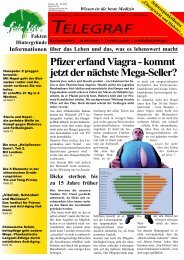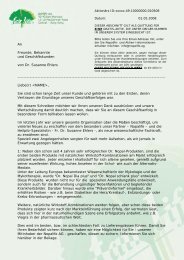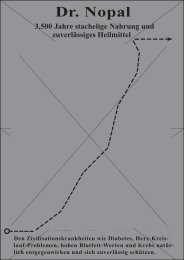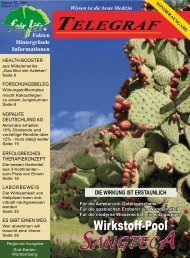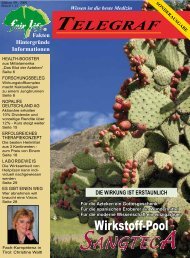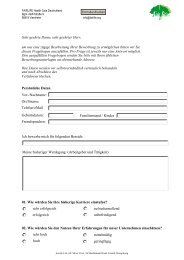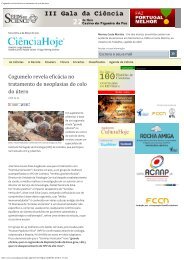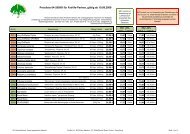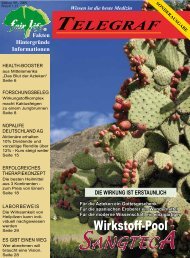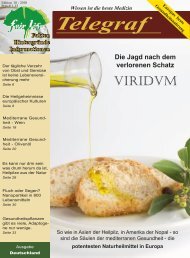Erfolgreiche ePaper selbst erstellen
Machen Sie aus Ihren PDF Publikationen ein blätterbares Flipbook mit unserer einzigartigen Google optimierten e-Paper Software.
Kapitel 5<br />
164<br />
plasma MDA concentrations was observed. Apart from being a<br />
cofactor of the GSH-peroxidase family, glutathione is involved<br />
in the prevention of oxidation and cross-linking of protein thiols.<br />
Therefore, the intracellular GSH concentration, as related to<br />
GSSG, is an important index of the body’s oxidative status (24).<br />
The elevation of GSH:GSSG observed in red blood cells indicates<br />
that supplementation with cactus pear reduces oxidative<br />
damage and results in an enhancement of the reducing potential<br />
of the cells.<br />
Our measurements also showed that circulating LDLs were less<br />
oxidized after supplementation with cactus pear fruit.<br />
The oxidation of LDL occurs to a large extent within blood vessel<br />
walls (25, 26), which means that the oxidative status of LDL<br />
reflects the oxidation status of the blood vessels (27). The remarkable<br />
reduction in plasma F2-isoprostanes, the concentration<br />
of which correlates with the concentration of cellular lipid<br />
hydroperoxides (21) and which is a biomarker of in vivo LDL<br />
oxidation (28, 29), appears to be consistent with the observation<br />
that supplementation with cactus pear results in less oxidized<br />
particles.<br />
Whereas body lipids appeared to be preserved, plasma concentrations<br />
of antioxidant vitamins, such as vitamin C and vitamin<br />
E, increased after supplementation with cactus pear fruit. The<br />
vitamin C concentration appears to be a reflection of the absorption<br />
of vitamin C from fruit. On the other hand, because the fruit<br />
is not a source of -tocopherol, the increase in vitamin E may<br />
result from a sparing effect on it by vitamin C (30). Despite the<br />
increase in these antioxidants, plasma total antioxidant capacity<br />
did not appear to be significantly affected after supplementation.<br />
On the assumption that their TEAC is 1.0 (30), the contribution<br />
of vitamin E and vitamin C to the plasma TEAC value at<br />
baseline was only 1.3% and 4.4%, respectively, which agrees<br />
with other reports (31, 32). Therefore, micromolar variations in<br />
these compounds cannot significantly modify the TEAC value.<br />
The contribution to the plasma TEAC of small amounts of other<br />
antioxidant components absorbed from the fruit may have also



